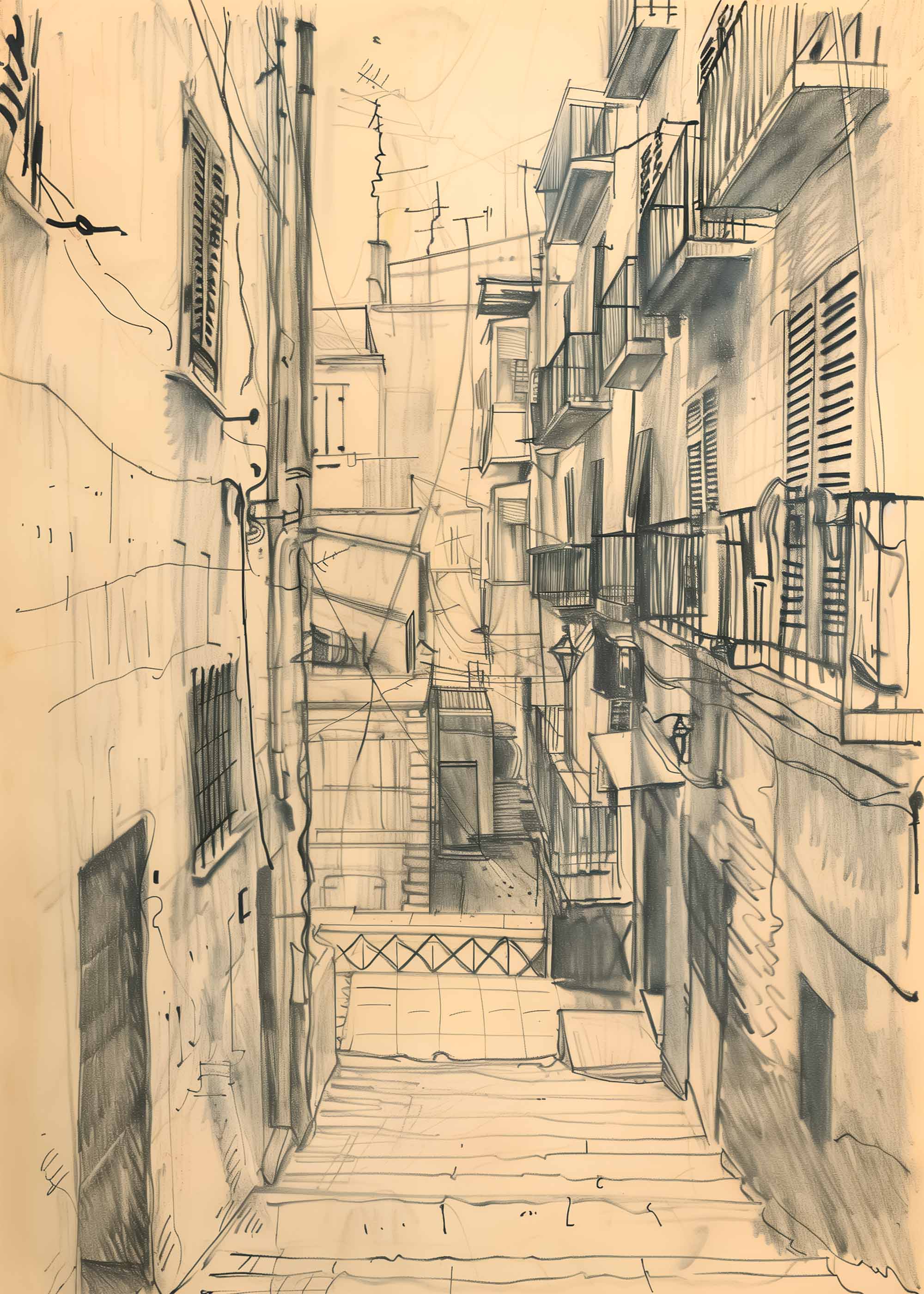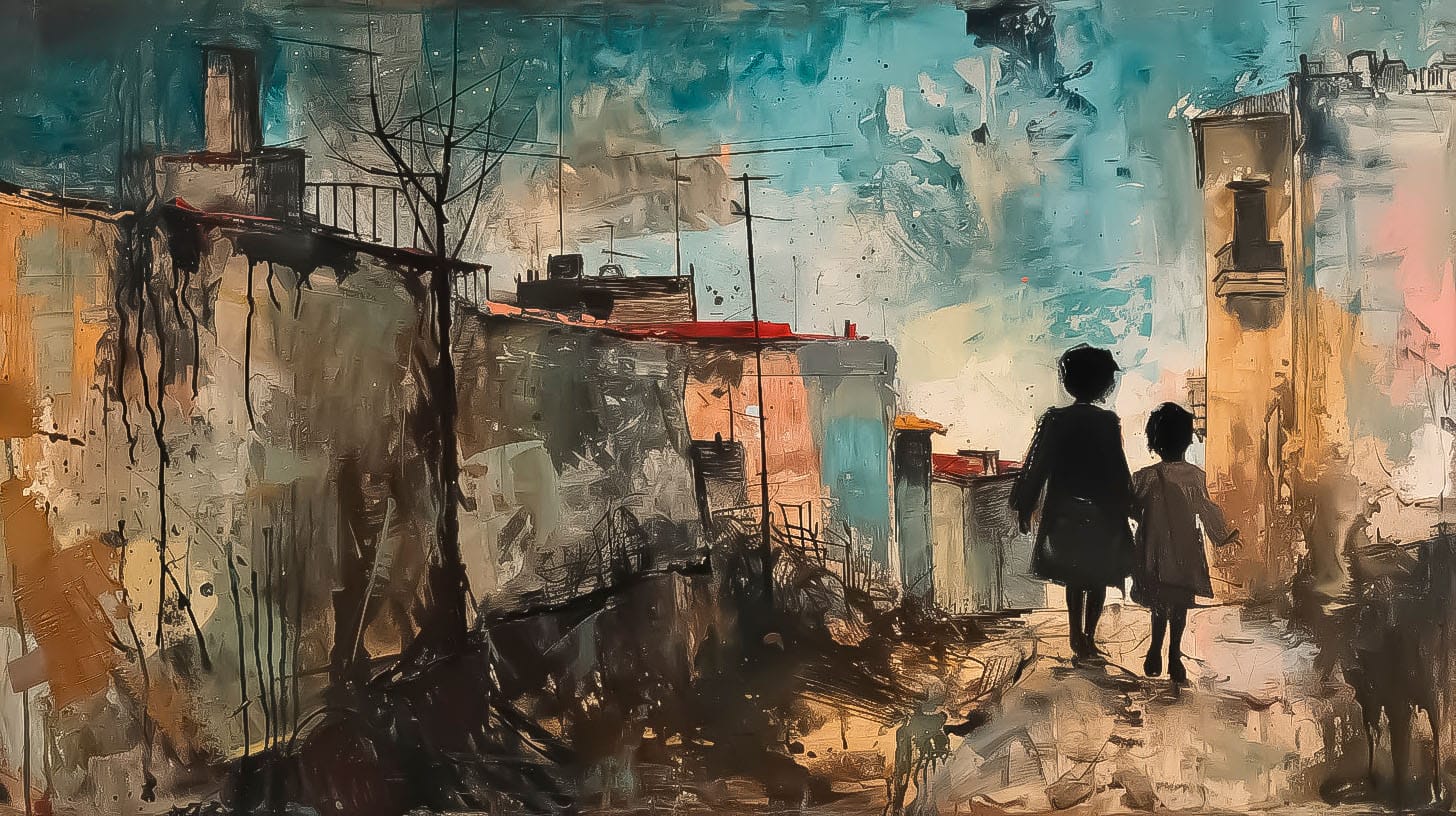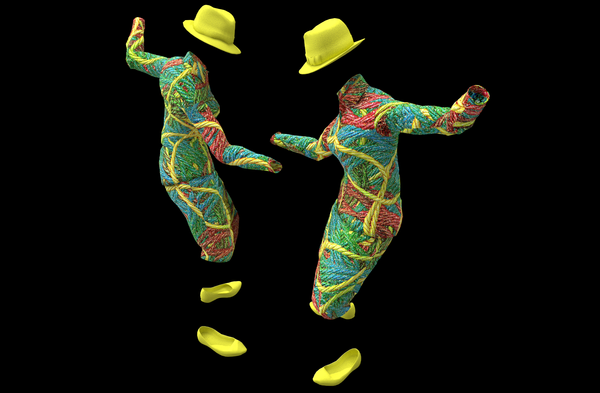Elena Ferrante’s "Neapolitan Novels" have captivated readers worldwide with their intricate storytelling and vivid portrayal of life in Naples. Spanning four books—My Brilliant Friend, The Story of a New Name, Those Who Leave and Those Who Stay, and The Story of the Lost Child—this series traces the lives of two childhood friends, Elena Greco and Raffaella "Lila" Cerullo, from the 1950s to the early 2000s.
Through their intertwined stories, Ferrante offers a rich, multifaceted depiction of urban life in the city's socio-economic realities, exploring its complexities, challenges, and transformations.
Here, we delve into how the "Neapolitan Novels" contribute to the depiction of life in the city, examining key themes such as socio-economic disparity, gender dynamics, political changes, and the impact of urban development.
The SocioEconomic Landscape of Naples
Ferrante’s portrayal of Naples is deeply rooted in the city's socio-economic realities. The neighborhood where Elena and Lila grow up is characterized by poverty, limited opportunities, and a rigid class structure. This setting forms the backdrop for much of the narrative, influencing the characters' aspirations, choices, and relationships.

Poverty and Aspiration
The pervasive poverty in the neighborhood is a constant presence in the novels. Ferrante vividly describes the rundown buildings, cramped living conditions, and the daily struggles of the inhabitants. This environment shapes the protagonists' outlook and fuels their desire for a better future. Elena’s academic achievements and Lila’s entrepreneurial ventures represent their attempts to escape the confines of their socio-economic status. However, the novels also depict the harsh realities of such aspirations, highlighting the systemic barriers that often thwart upward mobility.
Class Tensions
Class tensions are a recurring theme in the "Neapolitan Novels." The neighborhood is a microcosm of broader societal divisions, with clear distinctions between the working class and the wealthier segments of society. These tensions manifest in various ways, from personal rivalries to political conflicts. Ferrante explores how these class dynamics influence the characters’ interactions and shape their destinies. The contrast between Elena’s educational journey and Lila’s struggles within the local economy underscores the disparities and the limited social mobility available to many in Naples.
Gender Dynamics and Female Friendship
One of the most compelling aspects of the "Neapolitan Novels" is their exploration of gender dynamics and the profound friendship between Elena and Lila. Ferrante’s depiction of female experiences in Naples offers a nuanced perspective on women's challenges and complexities in a patriarchal society.

The Constraints of Gender Roles
Throughout the series, Ferrante highlights the constraints imposed by traditional gender roles. Women in the neighborhood are often confined to domestic spheres, with their lives revolving around marriage, motherhood, and household duties. The novels portray the limited options available to women and the societal expectations that dictate their choices. Elena and Lila grapple with these constraints in different ways—Elena through her pursuit of education and writing and Lila through her defiance and unconventional decisions.
Female Solidarity and Rivalry
The friendship between Elena and Lila is central to the narrative, serving as a lens through which Ferrante examines female solidarity and rivalry. Their relationship is marked by deep affection, mutual support, and intense competition. This dynamic reflects broader societal pressures and the internal conflicts from navigating a male-dominated world. Ferrante’s portrayal of their friendship captures the complexities of female relationships, highlighting how solidarity can coexist with rivalry in a context where opportunities are scarce and fiercely contested.

Neapolitan Woman I © Nicholas V. K.
A geometric, abstract portrait of a woman blended with architectural elements in warm tones and clean lines.
Political Changes and Urban Transformation
The "Neapolitan Novels" also serve as a chronicle of Naples' political and social changes over several decades. Through the characters’ lives, Ferrante illustrates how broader political movements and urban transformations impact the city and its inhabitants.
Post-War Reconstruction and Social Change
The series begins after World War II, a period of significant reconstruction and social change in Italy. Ferrante captures the optimism and turbulence of this era, depicting the rebuilding efforts and the emergence of new political ideologies. The characters’ lives are intertwined with these broader changes, reflecting the hopes and uncertainties of a society in transition.

The Rise of Political Extremism
Ferrante delves into the rise of political extremism and its impact on Naples as the novels progress. The characters become involved in various political movements, from socialism to radical activism. These political engagements are portrayed with nuance, highlighting both the idealism and the disillusionment accompanying them. Ferrante explores how political ideologies influence personal relationships and community dynamics, offering a rich tapestry of the political landscape in Naples.
Urban Development and Its Consequences
Urban development is another significant theme in the "Neapolitan Novels". Ferrante depicts the transformation of Naples’ physical and social landscape over time. The city's expansion, the construction of new buildings, and the gentrification of certain areas reflect the broader trends of urbanization and economic development. However, these changes also bring about new challenges, such as the displacement of long-standing communities and the erosion of traditional ways of life. Ferrante’s portrayal of urban development is both celebratory and critical, capturing the complexities of modernization and its impact on the city’s fabric.

The Cultural and Emotional Fabric of Naples
Beyond socio-economic and political themes, Ferrante’s "Neapolitan Novels" offer a profoundly emotional and cultural depiction of Naples. The city is not just a backdrop but a living, breathing entity that shapes the characters’ identities and experiences.
The Power of Place
Ferrante imbues Naples with a strong sense of place, capturing its vibrant streets, bustling markets, and scenic landscapes. The city’s geography is intricately woven into the narrative, influencing the characters’ movements and interactions. The neighborhood’s tight-knit community, intimate connections, and shared histories contrast with the broader, often indifferent city. This duality reflects the complexities of urban life, where personal and communal identities are constantly negotiated.

Language and Identity
Language is crucial in the "Neapolitan Novels," reflecting Naples's cultural richness and diversity. The characters' emotional landscapes are intricately tied to the city. Ferrante’s portrayal of love, friendship, betrayal, and ambition is deeply rooted in Naples's urban context. The characters navigate different linguistic registers, from the local dialect to standard Italian, symbolizing their social mobility and cultural affiliations. Ferrante uses language to explore identity, belonging, and alienation. The shifting linguistic landscape mirrors the characters’ journeys and the broader cultural shifts in Naples.
Emotional Landscapes
The characters' emotional landscapes are intricately tied to the city. Ferrante’s portrayal of love, friendship, betrayal, and ambition is deeply rooted in Naples's urban context. The city’s physical spaces—its homes, streets, and public squares—serve as settings for the characters’ emotional experiences. Ferrante captures the intensity of urban life, where personal dramas unfold against constant change and movement.
Glossary of Key Terms
- Socio-economic Landscape: The combined social and economic factors that characterise a particular area or society. In the "Neapolitan Novels," this refers to the poverty, limited opportunities, and rigid class structure of Naples.
- Gender Dynamics: The relationships and interactions between men and women, shaped by societal norms and expectations. The novels explore the constraints of traditional gender roles and their impact on women's lives in Naples.
- Patriarchal Society: A social system in which men hold primary power and authority, and women are often relegated to subordinate roles. Ferrante critiques the patriarchal structures that limit women's choices and opportunities in the novels.
- Political Extremism: The holding of extreme political views, often involving violence or a rejection of democratic principles. The novels explore the rise of political extremism in post-war Italy and its impact on Naples.
- Urban Development: The process of growth and change in cities, including the construction of new buildings, infrastructure, and the expansion of urban areas. Ferrante examines both the positive and negative consequences of urban development in Naples.
- Gentrification: The process of renovating and improving a neighbourhood, often leading to the displacement of lower-income residents and the arrival of more affluent individuals. This is a key theme in the novels, reflecting the changing socio-economic landscape of Naples.
- Dialect: A regional variety of a language with distinct pronunciation, grammar, and vocabulary. The characters in the novels use both standard Italian and Neapolitan dialect, highlighting their cultural backgrounds and social mobility.
- Emotional Landscape: The inner world of a character, encompassing their feelings, thoughts, and experiences. Ferrante connects the emotional landscapes of her characters to the physical spaces of Naples, showcasing the city's impact on their inner lives.
- Social Mobility: The ability of individuals or groups to move between different social classes or economic levels. The novels explore the challenges and limitations of social mobility in Naples, particularly for women from working-class backgrounds.
- Cultural Identity: The shared beliefs, values, customs, and traditions that define a particular group of people. Language, dialect, and social practices play a significant role in shaping cultural identity in the "Neapolitan Novels."
In Summation
Elena Ferrante’s "Neapolitan Novels" offer a profound and multifaceted depiction of life in Naples. Through the intertwined lives of Elena and Lila, Ferrante explores the socio-economic realities, gender dynamics, political changes, and cultural fabric of the city. Her portrayal of Naples is intimate and expansive, capturing the complexities and contradictions of urban life. The "Neapolitan Novels" not only illuminate the particularities of Naples but also resonate with broader themes of identity, community, and transformation. Through her masterful storytelling, Ferrante has created a literary portrait of a city as compelling and dynamic as its characters.







